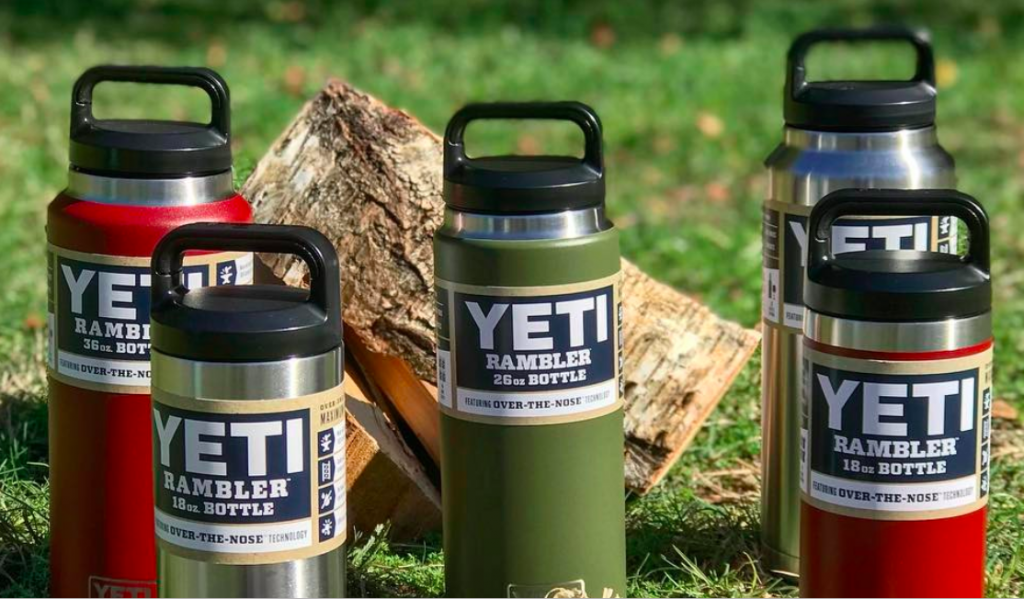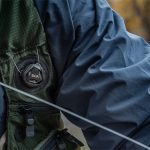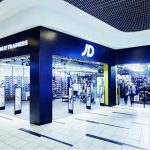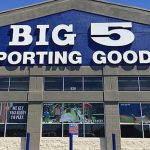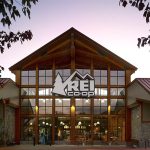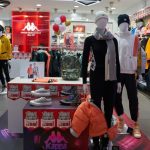In its first earnings report since going public, Yeti Holdings Inc. reported third-quarter earnings that topped Wall Street’s consensus target by $3.00 a share and set long-term growth targets of 10 to 15 percent as it pursues new categories, new customer segments and new channels. But shares fell $3.09, or 16.1 percent, on Thursday apparently due to concerns over weakness in its Cooler/Equipment segment.
The loss caused shares of Yeti to close below its IPO price of $18. The stock reached the market on October 24.
On a conference call with analysts, Matt Reintjes, president and CEO, highlighted the company’s strong profit gains in the quarter and success driving up gross margins in part due to an extensive effort to clear bloated inventories that hit the marketplace last year that delayed its IPO.
But he spent much of his time discussing the untapped growth potential in the brand. Said Reintjes, “We know Yeti is a special brand and we believe the investments we put behind this business set us up to deliver strong, sustainable and profitable growth over the long term.”
Sales in the quarter rose 7.2 percent to $196.1 million, in line with company guidance issued in public filings related to its IPO. Paul Carbone, CFO, said that while 7 percent is lower than its long-term guidance, this was due to a one-time bulk sale last year during the third quarter as Yeti transitioned into its second generation of soft coolers.
Carbone added, “Given our desire to get this new innovation associated with the second generation coolers into the market as soon as possible, we decided to clear through our first generation product, which was actually purchased back in 2016. In the future, we do not expect to see the same level of excess prior gen inventory when we launch new products as we have revamped our demand planning and inventory management processes.”
Coolers & Equipment sales fell 15.7 percent, to $86.7 million in the quarter.
In the Q&A session, Carbone further said cooler sales were “still slightly down” year-over-year even excluding the inventory clean-up last year. Management cited a slower-than-expected ramp of its new Tundra cooler in the wholesale channel “just to make sure we built inventory in advance.” The category also faced tough comparisons against “several exciting launches” last year. Finally, he noted that baked in the company’s expectations of growth of 19 to 20 percent this year is a healthier rate of cooler growth. Said Carbone, “We expect strong positive growth out of both Coolers & Equipment and Drinkware for the fourth quarter.”
Drinkware net sales increased 37.2 percent, to $104 million, driven by strong growth in both the wholesale and DTC channels. Growth in both channels benefitted from the expansion of the Drinkware product line, new Drinkware accessories, and the introduction of new Drinkware colorways.
Among channels, Wholesale sales were approximately flat at $125 million compared to the same period last year with lower Coolers & Equipment net sales, offset by an increase in Drinkware net sales. The decrease in Coolers & Equipment net sales was due primarily to a prior year non-recurring disposition of certain prior generation, excess end of life soft cooler inventories. The increase in Drinkware net sales in the wholesale channel was a result of replenishment orders from retail partners due to strong product sell through, sales of new products, and additional colorways for existing products.
Net sales through the company’s DTC channel increased 22.8 percent, to $71.2 million. The gains were driven by an increase in customer purchases on yeti.com, and Yeti Authorized on the Amazon Marketplace, as well as increased consumer and corporate customized Drinkware, primarily from yeticustomshop.com.
Jefferies analyst Randal Konik, who has a “Buy” rating on Yeti with a target price of $34, in a note tied the sell-off to “a slightly lower-than-Street-modeled Cooler/Equipment line, but we think this is a big overreaction.” He estimates Coolers/Equipment sales growth of more than 10 percent in the fourth quarter.
“Taking into consideration noise from prior year end-of-life sales of soft coolers, revenue trends are encouraging,” wrote Stifel’s Jim Duffy, who has a “Buy” rating at a $21 target price. “We see significant value in the brand’s premium positioning, and see compelling pathways to growth through geographic expansion and increased breadth of product offering.”
Reintjes spent much of his first conference call talking up Yeti’s untapped growth potential.
Among customers, he noted that while early adopters were in the hunting and fishing communities, Yeti has “become a go-to brand” for casual campers, beachgoers, backyard barbecues, tailgaters and daily commuters as well.
He pointed out that the percent of female customers has grown from 9 percent in 2015 to 34 percent in 2018.
Finally, he noted that in 2015, approximately two-thirds of Yeti’s consumer base was generated in heritage markets from Texas across the Gulf Coast and the southeast to Florida. Today, more than 50 percent of consumer demand is generated in newer, non-heritage markets.
He cited five factors expected to support the “incredible opportunity in front of us.”:
- Influential, growing lifestyle brand: Said Reintjes,”With a passionate following. YETI brand stands for innovation, performance, uncompromising quality, and durability. Our customers are passionate about YETI and act as brand advocates, with 95 percent saying they have proactively recommended our products to their friends, family and others.”
- Superior design capabilities and product development: Said Reintjes, “We strategically invest in the products and we strategically invest in the brand. That’s what allows us to deliver premium products and customer experiences. All of our products are built to stand out to whatever users do with it or do to it.”
- Balanced omni-channel distribution strategy: Year-to-date wholesale represented 67 percent of sales while DTC is a the remaining third. In 2015, wholesale was 90 percent. Said Reintjes, “We continue to value, support and invest with our retail partners, but we also recognize we need to be where the consumer wants to shop and we believe a powerful omni-channel approach supports that strategy.”
- Scalable infrastructure: Said Reintjes, “Our infrastructure enables us to manage our global manufacturing base, optimize distribution logistics, and effectively serve our expanding customer base. Importantly, it also provides us with the capabilities necessary to support our future growth.”
- Talented team: Said Reintjes, “Our senior management team is comprised of experienced executives from large global products and services businesses with proven track records of scaling business, leading innovation, expanding distribution, and managing expansive global operations.”
He also noted that the Yeti has become better balanced in its offerings over the years with slightly more than 50 percent of sales coming from Drinkware and slightly less than 50 percent coming from Coolers & Equipment.
He then cited four key growth drivers, led by expanding brand awareness among new customers and in new geographies. He noted that while Yeti has significantly expanded its brand reach throughout the U.S., unaided brand awareness is approximately 10 percent, reflecting mid-teens awareness in heritage markets with still mid-single digit awareness in some non-heritage markets. Said Reintjes, “Many of the most population dense parts of the U.S. remain underpenetrated from an unaided awareness perspective, which means introducing our brand and existing product portfolio into these markets creates great growth opportunities.”
Multi-layered marketing programs, word of mouth referrals, experiential brand events, and Yeti Ambassadors are expected to drive awareness. During the third quarter, Yeti launched its first national television and digital ad campaign and hit the road with the “10 years of Tundra” film tour celebrating the Yeti Tundra and the brand’s lifestyle.
Said Reintjes, “For the Tundra Tour, we had a fantastic attendance and reception across 11 cities in the U.S. from coast to coast from early September through the third week of November, culminating with 1,500 people in a theater in our hometown of Austin Texas.”
The second growth driver is product innovation. Yeti in 2017-2018 launched a variety of award-winning new products, and the future innovation pipeline is currently the highest in company’s history. Said Reintjes, “We believe our product families, extension, variations and colorways in addition to our new product launches result in repeat purchase by existing customers and consistently attract new customers to YETI.”
In the third quarter, Yeti launched the Tundra Haul, its first wheeled hard cooler; and the Tocayo everyday backpack.
DTC remains Yeti’s fasted growing channel, expanding from 8 percent of sales in 2015 to over 33 percent today. Growth is expected to come from its own website domestically and internationally, the Amazon Marketplace, corporate sales initiatives and by selectively increasing the number of own retail stores Its first flagship opened in its hometown of Austin in 2017 and stores are set to open in Charleston, SC and Chicago by mid-2019.
Finally, Yeti is “just scratching the surface” with international growth. In 2017, Yeti entered Canada and Australia and is seeing “strong growth” in both of those countries. Japan was entered in the third quarter. Said Reintjes, “We also believe there are meaningful growth opportunities in Europe and Asia, as many of the market dynamics in premium performance based consumer desires and needs that we successfully identified domestically are also highly valued in these markets. We plan to enter select international markets throughout 2019.”
For Fiscal 2018 the company expects the following:
- Net sales to increase between 19 percent and 20 percent compared to fiscal 2017 with higher sales growth in the DTC channel relative to the wholesale channel;
- Operating income as a percentage of net sales between 12.8 percent and 13.1 percent, primarily driven by higher gross margin;
- Adjusted operating income as a percentage of net sales between 15.2 percent and 15.5 percent, primarily driven by higher gross margin;
- Net income per diluted share between 60 and 64 cents a share.
- Adjusted Net Income per diluted share between 79 and 82 cents, as compared to 28 cents last year;
- Adjusted EBITDA between $141 million and $144 million, as compared to $97.5 million last year.
Longer term, annual sales net sales growth is expected at approximately 10 percent to 15 percent. Wholesale segment is expected to grow in the low to mid single digit range and DTC to grow in the mid 20 percent range long term. Similar growth rates are expected from Coolers & Equipment and from Drinkware.
Gross margin is expected to reach between 50 percent to 52 percent long-term as the company taps its scale to lower input costs and expands DTC.. Adjusted EBITDA margin is expected to reach 19 percent to 22 percent, driven by the gross margin expansion. Investments in SG&A are projected over the next couple of years to support direct-to-consumer and increased marketing spend.
Image courtesy Yeti

